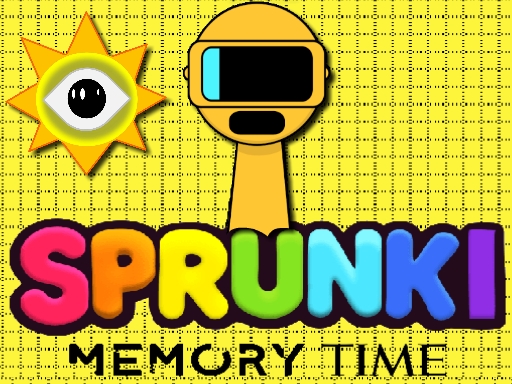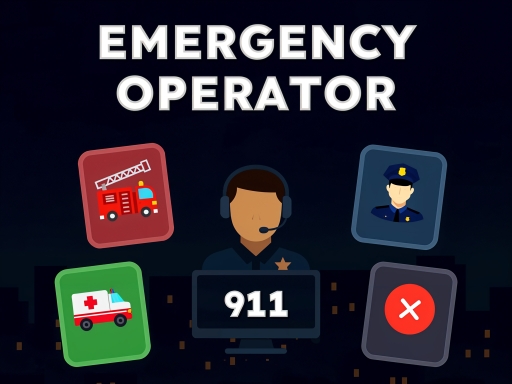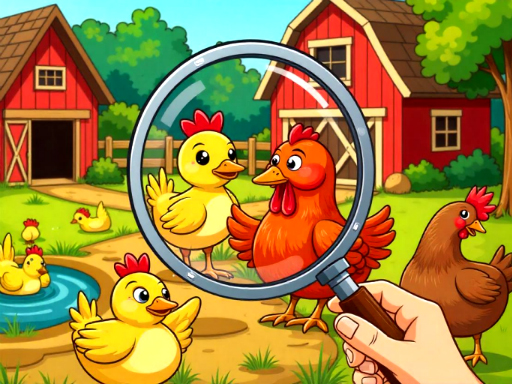Donut Detective
About Donut Detective
Okay, so you know how sometimes you stumble across a game, almost by accident, and it just… clicks? Like, it wasn't even on your radar, and then suddenly, it’s all you can think about? That’s exactly what happened to me with *Donut Detective*. Honestly, I’m still buzzing from my last session. You’ve gotta hear about this one, seriously.
I mean, when I first heard the name, I’ll admit, I chuckled a bit. “Donut Detective”? Sounds like something cute for kids, right? But oh my goodness, you are so wrong. This game is an absolute gem, a masterclass in subtle puzzle design wrapped in the most charming, utterly delightful aesthetic you could ever imagine. It’s not about explosions or epic boss battles; it’s about that quiet, intensely satisfying *aha!* moment when everything just falls into place, and you feel like the smartest person in the room. And it’s all set in a world where donuts are, well, they’re everything.
Imagine this: you step into a vibrant, sugary metropolis, a city built on frosted dreams and glazed aspirations. Every building is a bakery, every street vendor sells a different kind of pastry, and the inhabitants are… well, they’re donut people. Little sentient crullers, sophisticated eclairs, bustling jelly-filled citizens going about their daily lives. It’s whimsical, yes, but beneath that adorable exterior lies a surprisingly intricate web of mysteries, and you, my friend, are the only one who can untangle them. You are the Donut Detective.
What I love about games like this is how they manage to take a simple concept and elevate it into something genuinely captivating. You know how some puzzle games feel like a chore after a while, just repetitive motions? Not here. Each case in *Donut Detective* feels fresh, like a brand new culinary conundrum waiting to be savored. You’re not just matching shapes; you’re piecing together stories, uncovering secrets, and frankly, saving the day in the most delicious way possible.
The core gameplay loop, which sounds deceptively simple on paper, is where the real magic happens. A new case lands on your desk – maybe the legendary "Sprinkle of Destiny" has gone missing from the Grand Glaze Museum, or there’s a strange case of identical twin donuts causing chaos at the annual Doughnut Festival. Your first task? Investigation. You’re transported to the scene, and this is where your eyes become your most powerful tool. The screen fills with dozens, sometimes hundreds, of colorful, mouth-watering donuts. And I’m talking *detailed* donuts. You can almost smell the cinnamon, feel the slight stickiness of the glaze, see the individual sugar crystals sparkling.
Your initial objective is to find the ones that are "exactly the same." Now, this isn't just about finding two identical chocolate rings. Oh no, it’s far more nuanced. You're looking for patterns, for evidence. Maybe three blueberry fritters all have the same peculiar frosting drip, a tell-tale sign of a specific baker’s technique. Or a group of Boston creams share an identical, almost imperceptible, scratch on their side, indicating they came from the same faulty conveyor belt. The brilliant thing about this is that it forces you to slow down, to really *look*. You’ll find yourself zooming in, panning across the scene, your eyes darting from one delectable treat to another. There’s a quiet tension that builds as you search, a focused intensity that makes the eventual discovery so incredibly satisfying. It’s like being a forensic artist, but instead of blood spatter, you’re analyzing sprinkles.
And just when you think you’ve got a handle on things, when you’ve identified all the "same" donuts and gathered your initial clues, that’s when the real challenge emerges: finding the *Donut Detective* from the rest. This isn’t just another matching game; this is about spotting the anomaly, the one that doesn’t belong, the key piece of the puzzle that unlocks the next stage of the investigation. It might be a donut disguised to look like others, but with a subtle difference in its filling, or a unique topping that’s almost hidden. Sometimes, it’s a donut that’s perfectly normal, but its *placement* or *context* within the scene is what makes it the "Donut Detective." You're not just looking for differences; you're looking for *meaning* in those differences. It’s a fantastic twist on the classic spot-the-difference mechanic, turning it into a genuine act of deduction.
I remember one case, early on, where I spent ages trying to find the unique donut among a sea of seemingly identical jelly-filled ones. I’d matched all the "same" ones, I’d answered a couple of preliminary questions about their origins, and I was stumped. My eyes were practically blurring. Then, I zoomed in on a seemingly innocuous corner, and there it was: a tiny, almost invisible, fleck of *strawberry* jelly on a donut that was clearly supposed to be *raspberry*. It was so subtle, so easy to miss, but it was the crucial piece of evidence. The moment it clicked, that little visual "ping" the game gives you, it’s just pure, unadulterated joy. You can almost feel that rush of adrenaline, that satisfying "click" in your brain as the pieces fall into place. That’s the kind of emotional connection this game fosters – it makes you feel genuinely clever.
After you’ve gathered your evidence and identified the "Donut Detective" donut, you move into the deduction phase. This is where those "fun questions" come in. They’re not just trivia; they’re designed to test your observational skills and your logical reasoning based on the clues you've uncovered. "Based on the unique vanilla bean flecks found on the suspect donut, which of these three bakeries is the most likely culprit?" Or "Considering the distinct caramel drizzle pattern, what time of day was this particular batch likely prepared?" It’s a delightful way to reinforce the narrative and make you feel like you’re truly solving a case, not just mindlessly clicking. You’re building a profile, connecting the dots, and it’s incredibly rewarding.
And then, as a reward for your keen eye and brilliant deductions, or sometimes as a forensic reconstruction of a missing artifact, you get to design your very own donut. This is where the creativity really shines. You get to choose your dough type – fluffy brioche, classic yeast, dense cake. Then the glazes, the frostings, the fillings! Oh, the fillings! From classic jam to exotic fruit purees, rich custards to decadent chocolate ganaches. And the toppings! Sprinkles of every conceivable color and shape, chocolate shavings, candied nuts, edible glitter, even tiny little fondant detective hats if you’ve unlocked them. You can spend ages perfecting your creation, choosing your favorite colors and toppings, making it truly unique. It’s such a charming, relaxing way to wind down after the intense focus of a case. And of course, the game prompts you to "pretend to take a big bite and ‘eat’ your creation," which, honestly, I always do. It’s a silly, delightful little touch that just adds to the overall charm.
What’s fascinating is how *Donut Detective* manages to create a whole world, a whole *culture*, around something as simple as a pastry. The characters you meet – the grizzled old Doughnut Inspector, the flamboyant Pastry Prince, the shy Muffin Maid – are all so memorable and endearing. Each case has its own little narrative arc, its own stakes, and its own cast of sugary suspects. You're not just playing a game; you're immersing yourself in a whimsical universe where every crumb tells a story.
I've always been drawn to games that prioritize observation and deduction, but often they can feel a bit dry or overly complex. *Donut Detective* strikes that perfect balance. It respects your intelligence without making you feel overwhelmed. It’s the kind of game you can pick up for a quick case or lose hours in, completely absorbed, forgetting about the real world for a while. There’s something magical about that feeling, isn’t there? When a game just pulls you in and doesn't let go.
The visual style is vibrant and inviting, almost like stepping into a beautifully illustrated children’s book, but with enough intricate detail to challenge even the most eagle-eyed player. The sound design is subtle but effective – the gentle hum of the bakery, the faint clinking of cutlery, the satisfying little "ding" when you spot a crucial clue. It all comes together to create an experience that is just… lovely. It’s genuinely exciting because it’s so unexpected, so clever in its simplicity, and so utterly charming. You owe it to yourself to check it out. Seriously, just wait until you encounter your first "Mystery of the Missing Macaron" – you'll be hooked. You can almost feel the weight of your imaginary magnifying glass, the thrill of the chase, and the pure satisfaction of a case well and truly solved. It’s a true delight, and I can’t recommend it enough.
I mean, when I first heard the name, I’ll admit, I chuckled a bit. “Donut Detective”? Sounds like something cute for kids, right? But oh my goodness, you are so wrong. This game is an absolute gem, a masterclass in subtle puzzle design wrapped in the most charming, utterly delightful aesthetic you could ever imagine. It’s not about explosions or epic boss battles; it’s about that quiet, intensely satisfying *aha!* moment when everything just falls into place, and you feel like the smartest person in the room. And it’s all set in a world where donuts are, well, they’re everything.
Imagine this: you step into a vibrant, sugary metropolis, a city built on frosted dreams and glazed aspirations. Every building is a bakery, every street vendor sells a different kind of pastry, and the inhabitants are… well, they’re donut people. Little sentient crullers, sophisticated eclairs, bustling jelly-filled citizens going about their daily lives. It’s whimsical, yes, but beneath that adorable exterior lies a surprisingly intricate web of mysteries, and you, my friend, are the only one who can untangle them. You are the Donut Detective.
What I love about games like this is how they manage to take a simple concept and elevate it into something genuinely captivating. You know how some puzzle games feel like a chore after a while, just repetitive motions? Not here. Each case in *Donut Detective* feels fresh, like a brand new culinary conundrum waiting to be savored. You’re not just matching shapes; you’re piecing together stories, uncovering secrets, and frankly, saving the day in the most delicious way possible.
The core gameplay loop, which sounds deceptively simple on paper, is where the real magic happens. A new case lands on your desk – maybe the legendary "Sprinkle of Destiny" has gone missing from the Grand Glaze Museum, or there’s a strange case of identical twin donuts causing chaos at the annual Doughnut Festival. Your first task? Investigation. You’re transported to the scene, and this is where your eyes become your most powerful tool. The screen fills with dozens, sometimes hundreds, of colorful, mouth-watering donuts. And I’m talking *detailed* donuts. You can almost smell the cinnamon, feel the slight stickiness of the glaze, see the individual sugar crystals sparkling.
Your initial objective is to find the ones that are "exactly the same." Now, this isn't just about finding two identical chocolate rings. Oh no, it’s far more nuanced. You're looking for patterns, for evidence. Maybe three blueberry fritters all have the same peculiar frosting drip, a tell-tale sign of a specific baker’s technique. Or a group of Boston creams share an identical, almost imperceptible, scratch on their side, indicating they came from the same faulty conveyor belt. The brilliant thing about this is that it forces you to slow down, to really *look*. You’ll find yourself zooming in, panning across the scene, your eyes darting from one delectable treat to another. There’s a quiet tension that builds as you search, a focused intensity that makes the eventual discovery so incredibly satisfying. It’s like being a forensic artist, but instead of blood spatter, you’re analyzing sprinkles.
And just when you think you’ve got a handle on things, when you’ve identified all the "same" donuts and gathered your initial clues, that’s when the real challenge emerges: finding the *Donut Detective* from the rest. This isn’t just another matching game; this is about spotting the anomaly, the one that doesn’t belong, the key piece of the puzzle that unlocks the next stage of the investigation. It might be a donut disguised to look like others, but with a subtle difference in its filling, or a unique topping that’s almost hidden. Sometimes, it’s a donut that’s perfectly normal, but its *placement* or *context* within the scene is what makes it the "Donut Detective." You're not just looking for differences; you're looking for *meaning* in those differences. It’s a fantastic twist on the classic spot-the-difference mechanic, turning it into a genuine act of deduction.
I remember one case, early on, where I spent ages trying to find the unique donut among a sea of seemingly identical jelly-filled ones. I’d matched all the "same" ones, I’d answered a couple of preliminary questions about their origins, and I was stumped. My eyes were practically blurring. Then, I zoomed in on a seemingly innocuous corner, and there it was: a tiny, almost invisible, fleck of *strawberry* jelly on a donut that was clearly supposed to be *raspberry*. It was so subtle, so easy to miss, but it was the crucial piece of evidence. The moment it clicked, that little visual "ping" the game gives you, it’s just pure, unadulterated joy. You can almost feel that rush of adrenaline, that satisfying "click" in your brain as the pieces fall into place. That’s the kind of emotional connection this game fosters – it makes you feel genuinely clever.
After you’ve gathered your evidence and identified the "Donut Detective" donut, you move into the deduction phase. This is where those "fun questions" come in. They’re not just trivia; they’re designed to test your observational skills and your logical reasoning based on the clues you've uncovered. "Based on the unique vanilla bean flecks found on the suspect donut, which of these three bakeries is the most likely culprit?" Or "Considering the distinct caramel drizzle pattern, what time of day was this particular batch likely prepared?" It’s a delightful way to reinforce the narrative and make you feel like you’re truly solving a case, not just mindlessly clicking. You’re building a profile, connecting the dots, and it’s incredibly rewarding.
And then, as a reward for your keen eye and brilliant deductions, or sometimes as a forensic reconstruction of a missing artifact, you get to design your very own donut. This is where the creativity really shines. You get to choose your dough type – fluffy brioche, classic yeast, dense cake. Then the glazes, the frostings, the fillings! Oh, the fillings! From classic jam to exotic fruit purees, rich custards to decadent chocolate ganaches. And the toppings! Sprinkles of every conceivable color and shape, chocolate shavings, candied nuts, edible glitter, even tiny little fondant detective hats if you’ve unlocked them. You can spend ages perfecting your creation, choosing your favorite colors and toppings, making it truly unique. It’s such a charming, relaxing way to wind down after the intense focus of a case. And of course, the game prompts you to "pretend to take a big bite and ‘eat’ your creation," which, honestly, I always do. It’s a silly, delightful little touch that just adds to the overall charm.
What’s fascinating is how *Donut Detective* manages to create a whole world, a whole *culture*, around something as simple as a pastry. The characters you meet – the grizzled old Doughnut Inspector, the flamboyant Pastry Prince, the shy Muffin Maid – are all so memorable and endearing. Each case has its own little narrative arc, its own stakes, and its own cast of sugary suspects. You're not just playing a game; you're immersing yourself in a whimsical universe where every crumb tells a story.
I've always been drawn to games that prioritize observation and deduction, but often they can feel a bit dry or overly complex. *Donut Detective* strikes that perfect balance. It respects your intelligence without making you feel overwhelmed. It’s the kind of game you can pick up for a quick case or lose hours in, completely absorbed, forgetting about the real world for a while. There’s something magical about that feeling, isn’t there? When a game just pulls you in and doesn't let go.
The visual style is vibrant and inviting, almost like stepping into a beautifully illustrated children’s book, but with enough intricate detail to challenge even the most eagle-eyed player. The sound design is subtle but effective – the gentle hum of the bakery, the faint clinking of cutlery, the satisfying little "ding" when you spot a crucial clue. It all comes together to create an experience that is just… lovely. It’s genuinely exciting because it’s so unexpected, so clever in its simplicity, and so utterly charming. You owe it to yourself to check it out. Seriously, just wait until you encounter your first "Mystery of the Missing Macaron" – you'll be hooked. You can almost feel the weight of your imaginary magnifying glass, the thrill of the chase, and the pure satisfaction of a case well and truly solved. It’s a true delight, and I can’t recommend it enough.
Enjoy playing Donut Detective online for free on Coduxa. This Puzzle game offers amazing gameplay and stunning graphics. No downloads required, play directly in your browser!
How to Play
mouse click or touch screen





Comments
This game is awesome! I love the graphics and gameplay.
One of the best games I've played recently. Highly recommended!